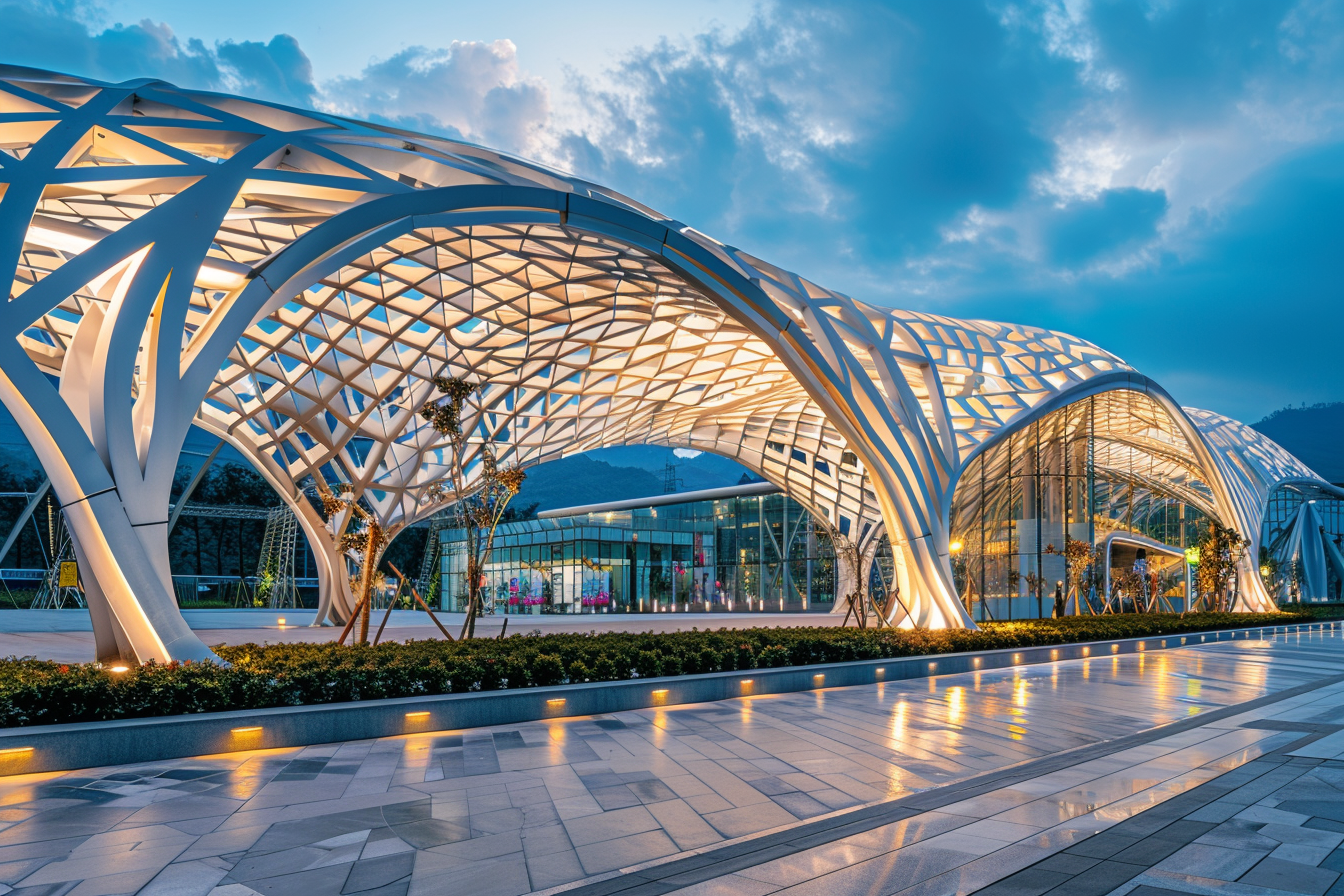Metal Systems in Architecture

1. Introduction
Metal systems are foundational in contemporary architecture, offering unparalleled strength, versatility, and aesthetic potential. Whether used in the skeleton of a skyscraper or the cladding of a boutique gallery, metals like steel, aluminum, and copper play critical roles in shaping the built environment. For recent architecture graduates entering the profession, understanding how and when to use these materials is essential to delivering both structurally sound and visually compelling designs. This article explores the properties, applications, and practical design considerations of steel, aluminum, and copper in architecture. It bridges academic understanding with real-world implementation, incorporating current standards and case studies to offer practical insights for emerging professionals.
2. Steel in Architecture
Properties
- High tensile and compressive strength: Ideal for load-bearing structures.
- Ductility: Can withstand stress and deform without breaking.
- Recyclability: 100% recyclable, reducing environmental impact.
- Thermal conductivity: Conducts heat efficiently—important in thermal bridging considerations.
Common Architectural Uses
- Structural frames (e.g., columns, beams)
- Long-span roofs and bridges
- Façade support systems
- Staircases and custom detailing
Red Visual Aid Suggestion: Diagram of a steel structural frame vs. a concrete one, showing relative material sizes and spans.
Standards & Specifications
- ASTM A992: Commonly used for structural steel in building frames.
- AISC Steel Construction Manual: Widely referenced for structural steel design.
Design Considerations
- Fire protection is essential (e.g., intumescent paint, cladding).
- Corrosion resistance requires galvanizing or protective coatings.
- Steel is susceptible to thermal expansion and contraction in large applications.
Pro Tip:Always coordinate steel designs early with structural engineers to optimize member sizing and connection details. Overdesigning increases cost and weight.
Case Study 1: Hearst Tower, New York (Foster + Partners)
- Use of steel diagrid system reduced the need for internal columns.
- Achieved LEED Gold certification partly due to steel's high recycled content.
- Structural expression is celebrated rather than concealed.
3. Aluminum in Architecture
Properties
- Lightweight: ~1/3 the weight of steel.
- High corrosion resistance: Forms a natural oxide layer.
- Malleable: Excellent for extrusion and custom profile design.
- Low maintenance: Good for long-term durability.
Common Architectural Uses
- Curtain wall and window frames
- Roof and wall cladding systems
- Sunscreens and shading devices
- Handrails and light structural elements
Standards & Specifications
- AA (Aluminum Association) designations (e.g., 6061-T6 for structural use)
- ASTM B209: Covers aluminum sheet and plate
Design Considerations
- Prone to denting or deformation under high impact.
- Requires thermal breaks in fenestration systems.
- Recyclable but energy-intensive to produce.
Pro Tip:When specifying aluminum finishes, clarify between anodized and powder-coated treatments—they behave differently in UV exposure and corrosion.
Case Study 2: Fondation Louis Vuitton, Paris (Frank Gehry)
- Complex curvilinear forms achieved with lightweight aluminum cladding.
- Used extruded aluminum profiles for precise control of geometry.
- High-performance coatings were applied to enhance durability.
4. Copper in Architecture
Properties
- Natural patina: Oxidizes over time from bright orange to green.
- Malleability: Allows for intricate detail and shaping.
- Durability: Can last over 100 years in the right environment.
- Biocidal properties: Resists moss, fungi, and bacteria.
Common Architectural Uses
- Roofing and spires
- Wall cladding and panels
- Gutters and rainwater systems
- Decorative accents (e.g., door hardware, sculpture)
- ASTM B370: Copper sheet and strip for building construction
- EN 1172 (Europe): Covers requirements for architectural copper
Design Considerations
- High initial cost but low life-cycle cost.
- Incompatible with certain metals (e.g., galvanized steel) due to galvanic corrosion.
- Requires expansion joints due to thermal movement.
Pro Tip: In coastal environments, copper's patina forms more rapidly due to salt in the air, offering unique aging characteristics.
Case Study 3: Oslo Opera House, Norway (Snøhetta)
- Used copper alloy cladding to contrast with surrounding white marble.
- Panels designed to weather unevenly for dynamic visual interest.
- Details resolved to prevent staining of adjacent materials.
5. Hybrid Applications and Material Synergies
Steel + Glass
- High-strength steel frames allow expansive glass panels.
- Example: Apple Store, 5th Avenue, NYC uses slender steel supports for a floating glass box effect.
Aluminum + Wood
- Combines warmth of wood with durability of aluminum (e.g., wood interior/aluminum exterior window frames).
Copper + Concrete
- Textural and color contrast in contemporary civic buildings.
- Consider detailing for run-off staining.
Pro Tip:Using multiple metals? Always check their position in the galvanic series to avoid electrochemical corrosion.
6. Sustainability and Environmental Considerations
- All three metals are recyclable, with steel being the most recycled building material worldwide.
- Use Environmental Product Declarations (EPDs) for transparency.
- Opt for pre-fabrication and modular assembly to reduce waste.
- Consider sourcing locally to minimize transport emissions.
Pro Tip: Specify EPD-certified steel or aluminum for green building certifications like LEED or BREEAM.
7. Climate and Context-Based Decisions
Urban Settings
- Steel often preferred for speed of erection and high load-bearing needs.
- Aluminum used in high-rise curtain walls for weight reduction.
Rural or Natural Settings
- Copper offers contextual aging and a connection to the natural environment.
- Passive design strategies pair well with thermally broken aluminum.
Budget Constraints
- Galvanized steel offers cost-effective durability.
- Anodized aluminum provides mid-range performance.
- Copper should be used strategically for focal areas.
8. Conclusion Metal systems are essential components in architectural design, not only for their structural capabilities but also for their expressive potential and adaptability across scales and contexts. Steel, aluminum, and copper each offer unique characteristics that, when properly understood and applied, can elevate a project from functional to iconic. For recent graduates, mastering the technical specifications, design opportunities, and integration methods of metal systems is a key step toward becoming well-rounded, competent professionals. The ability to speak knowledgeably about material performance, standards, and detailing will build credibility with clients, consultants, and contractors alike. As architecture continues to evolve with technological and environmental demands, metals will remain at the core of innovation—offering strength, flexibility, and beauty in equal measure.